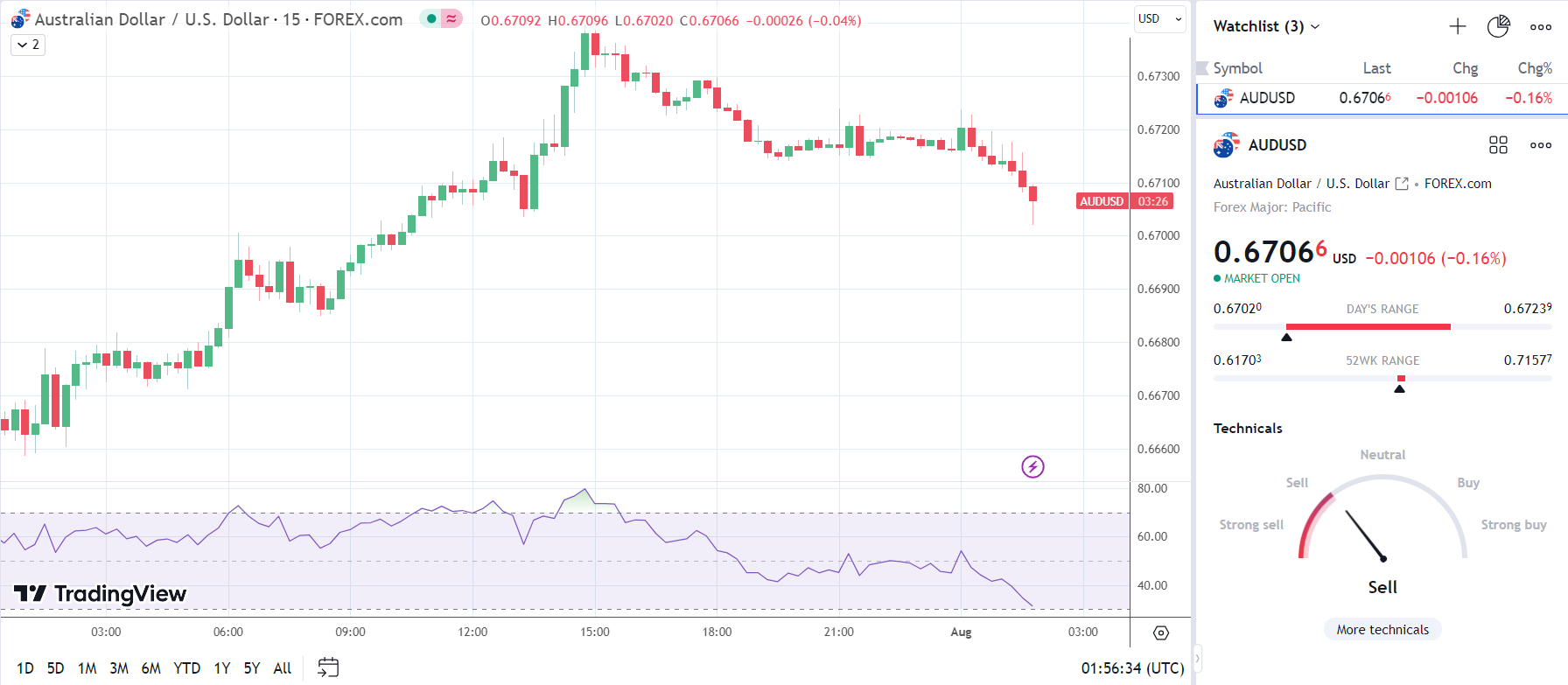Highlights
It was a busy start to the Tuesday session, with the Caixin Manufacturing PMI from China drawing interest.
Manufacturing sector activity waned in July, with the sector unexpectedly contracting.
Later today, euro area manufacturing PMIs will need consideration ahead of the influential US ISM Manufacturing PMI.
It was a busy start to August, with manufacturing PMI numbers from Japan and Australia drawing interest. However, the Caixin Manufacturing PMI from China garnered more interest this morning.
Following disappointing NBS private sector PMIs on Monday, today’s PMI was more significant, with the Markit survey-based numbers more reflective of the Chinese economy.
The Caixin Manufacturing PMI fell from 50.5 to 49.2. Economists forecast the Manufacturing PMI to fall from 50.5 to 50.3 in July.
According to the July survey,
New orders declined for the first time in three months, weighing on manufacturing sector activity.
Manufacturers attributed the fall in new orders to weaker economic conditions at home and abroad. New export orders fell at the most marked rate since September 2022.
Companies cut production for the first time since January, as producers responded to the weakening demand environment.
Employment fell for the fifth consecutive month in July, albeit at a less marked pace than the May record.
A lack of stock weighed on supplier performance.
Input prices declined further in July, though the rate of decline was softer than in recent months.
Factory gate prices fell on competitive pricing strategies and price negotiations with clients.
Optimism remained subdued, with weak domestic and overseas demand a drag.
AUD/USD Reaction to China Caixin Manufacturing PMI
Before the Caixin Manufacturing PMI, the AUD/USD rose to a pre-stat high of $0.67239 before falling to a low of $0.67082.
However, in response to the Caixin Manufacturing PMI numbers, the AUD/USD fell from $0.67096 to a post-stat low of $0.67020.
This morning, the AUD/USD was down 0.16% to $0.67066.

010823 AUDUSD 15-Minute Chart
Economic indicators from China have a material impact on commodity prices. Weak numbers would signal deteriorating macroeconomic conditions and weakening demand for raw materials. The Aussie Dollar is a commodity currency, meaning the Aussie is sensitive to economic indicators from China and commodity prices.
Next Up
It is a busy Tuesday session on the global economic calendar. Euro area and US manufacturing PMI numbers will influence market risk sentiment. While the markets are betting on a Eurozone economic recession, optimism toward a US soft landing has fueled a dollar recovery.
Today’s manufacturing PMIs will give investors a view of global trade terms and demand for goods.
>>> Read full article>>>
Copyright for syndicated content belongs to the linked Source : FXEmpire – https://www.fxempire.com/news/article/china-caixin-manufacturing-pmi-slides-to-sub-50-on-weak-demand-1364919































